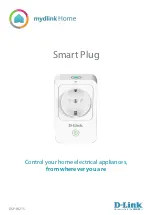
An
Association Group
is a group of multiple devices that is treated as a single device and thus controlled
with a single command. Usually association groups unite similar devices as they all receive the same
command. Each association group must include the following information:
— A grouping identifier
— A maximum number of devices that can be added to the group
— A description of how the association group is used and/or triggered by the product
Associations can be created via a central controller or an End Point. When creating an End Point
association, the Association Set command is sent to the actual End Point; not to the Root Device
(Controller).
The device or subdevice can have a fixed number of nodes in their association group (not more than 5).
Association group 1 is always reserved for the Z-Wave Plus Lifeline service, and it should not be
assigned for any other purpose. The actual Device Type of a given product specifies mandatory
commands which the device must be able to send to a Lifeline group destination. A manufacturer may
add support for additional commands that can be sent to the Lifeline group.
A
Multi Channel command class
is used to set communications between one or more items in a Multi
device. eZLO Hub can control Multi Channel devices, but it doesn’t support Multi Channel command
classes. For example: if a slave device supporting a Multi Channel command class has a few components
(such as a smart strip with a few power outlets), eZLO will treat each channel as a device item and will
send commands to each item. Each channel will be represented by an individual control in the UI.
NIF
(Network Information Frame)
is a service frame which contains a list of Supported Command
Classes. Sending it may be useful for advanced Smart Home users and can be initiated on the
Settings
page of an eZLO Hub by selecting the
Z-Wave
tick, opening the
Z-Wave Settings
drop-down menu and
selecting the
Send NIF
option.
62
Summary of Contents for EZ001-1
Page 1: ...User Guide Web ...



































